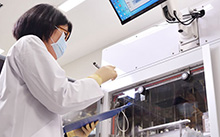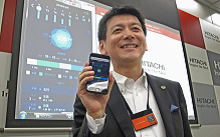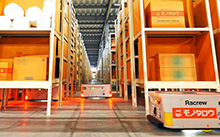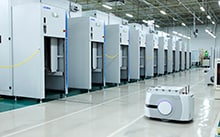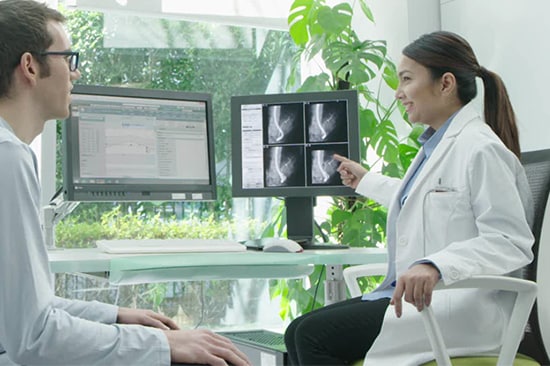
Increases in various kinds of diseases. Widening disparities in care among different regions. Increasing medical costs. These are some of the issues faced by modern society, and to solve them and to maintain and improve Quality of Life (QoL), it is essential to provide healthcare services tailored to each individual, to ensure efficient management of care, and to create sustainable social healthcare systems. Advancements in medical technologies alone will not be sufficient to accomplish these goals. Integration of advanced IT and social infrastructure technologies, digitization of information on people's behaviors and the state of objects, and innovations that utilize AI, data analytics, and control technologies will be required.
For these reasons, Hitachi has identified healthcare as a vital infrastructure for supporting society, in addition to other areas such as electricity, water, and transportation that are essential for life, and has developed its healthcare business as a pillar of its Social Innovation Business.
Hitachi's healthcare business has achieved innovation through the introduction of a variety of first-in-Japan and first-in-the-world products and technologies since the 1950s. It works in collaboration with medical professionals to develop products and services, and in the 2000s expanded the scope of its healthcare business to advanced domains such as cancer treatment devices and healthcare IT, contributing to raising the quality and efficiency of healthcare. It now has the capability to lead across all healthcare-related social systems with its operation technology (OT), information technology (IT), and products.
Failure detection for superconducting MRI systems is one of the issues being addressed by Hitachi's healthcare business.
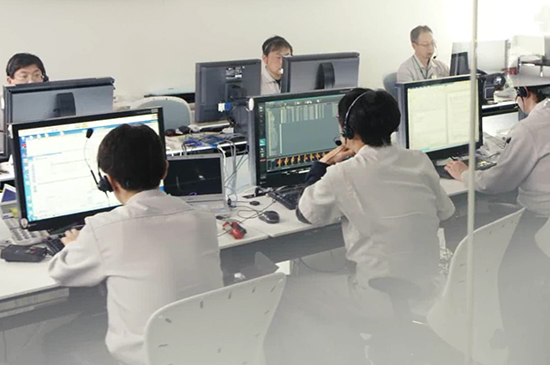
A superconducting MRI is a medical system that takes images of the inside of the human body using magnetic and radio waves. It is often used in both routine and comprehensive medical checkups, and if it breaks down it will not only prevent checkups from happening, but will force rescheduling (rebooking) of appointment dates. Hospitals cannot receive checkup fees during times the systems are out of service. Moreover, emergency repairs cost more than normal maintenance.
To avoid these situations, remote maintenance support has been provided since the mid-1990s, back when dial-up phone connections were still required, by Hitachi's Healthcare Business Unit ("Healthcare BU," formerly Hitachi Medical Corporation). Using the Sentinel Customer Support IoT/M2M system, technicians set threshold values for data from various sensors, then observed fluctuations in data and determined the necessity of maintenance work and the timing for parts replacement.
However, while skilled technicians can predict failures in advance based on observations honed through experience, the systems maintained by Healthcare BU number from hundreds to several thousand of devices throughout the world. It is impossible for experts to monitor all of them. Furthermore, when predictive maintenance is performed using decisions based on threshold values, failure in many cases can only be detected immediately prior to its onset, requiring “corrective maintenance” after a breakdown occurs.
To solve this problem, Healthcare BU used two methods.
The first was to devise a mechanism to determine the cause of MRI failure by classifying and analyzing the massive amounts of accumulated sensor data.
Healthcare BU, which has monitored and maintained numerous superconducting MRI systems*1 over many years, has a massive stockpile of sensor data. Looking at this data, we focused on the chiller, which is the core component that generates the superconducting Sentinel Analytics state, and using the sensor data we were guided to information about how the chiller was used and how it behaved up until the life of the system. We believed that matching this data with the event data from breakdowns would lead us to determine the cause and effect relationship.
Healthcare BU prepared three years' worth of data for 100 MRI systems and asked the laboratory to analyze fault patterns. Utilizing the Pentaho big data analysis software*2 provided by Pentaho, a subsidiary of Hitachi Data Systems Corporation in the United States, the laboratory classified and analyzed data based on trend analysis, and created a system to investigate cause patterns behind the failures.
At this stage, the challenge was preprocessing for sensor data cleansing. The sensor data sent from the system had large amounts of noise, which led to concerns that diagnostic accuracy would be reduced if the data were used as-is. Therefore, the laboratory removed the noise using filters on the raw data before analysis. By analyzing the data in a more effective state, we completed a mechanism that could detect causes of failure with greater accuracy.
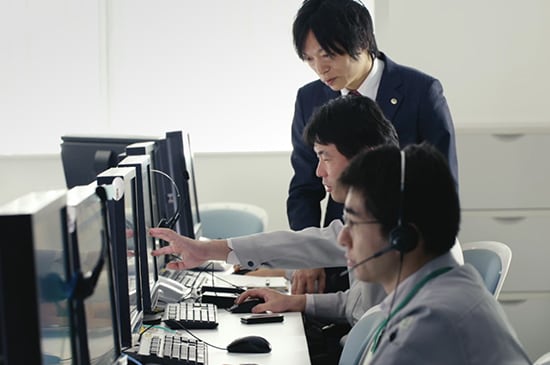
Another method for solving the problems was to build a mechanism that could more quickly detect when a system was not in a normal operating state.
For this solution, we used Hitachi's Global e-Service on TWX-21/ Predictive Maintenance Service. This service utilizes a diagnostic algorithm based on LSC: Local Subspace Classifier, Hitachi's exclusive cluster analysis technology. It diagnoses the system's status remotely, and allows early detection of state changes and abnormalities that can lead to failure.
Healthcare BU used this service and worked with the Information & Communication Technology Business Division (the former Hitachi, Ltd. Information and Telecommunication Systems Company) to take past data from multiple sensors sent from each of approximately 500 MRI systems and derive the data for periods when machines were running properly, then classify them into clusters and perform machine learning of a normal operating state. We compared current sensor data with machine-learned clusters and developed a mechanism for detecting signs of failure when data deviated from the clusters.
In order for this technology to facilitate machine learning of the normal operating state, we first have to define what "normal" is. Fortunately Healthcare BU has a history of monitoring and maintaining a total of several thousand systems since the days of dial-up internet connections, so it has trained experts with advanced knowledge to detect signs of failure. Based on this knowledge we defined the normal operating state and did a series of machine learning and fine-tuning, by which we reduced misreports and false alarms and developed the system into one that could withstand use at medical institutions.
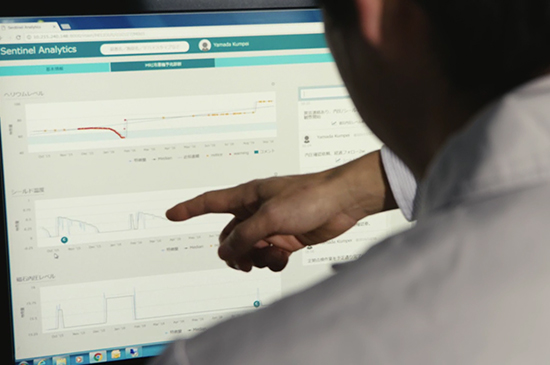
Through this process, the Sentinel Analytics predictive maintenance service for superconducting MRI systems was completed.
There are many IoT/M2M services that connect systems to the internet and allow people to monitor them remotely. However, there are almost no other systems that use advanced data-based analysis methods such as machine learning and also eliminate the need for human operation to realize a highly advanced predictive maintenance service.
Sentinel Analytics has made it possible to detect symptoms several months before the onset of failure and to repair and replace parts regularly before the chiller breaks down, making "predictive maintenance" possible. Data shows that by using Sentinel Analytics, downtime has been reduced by 16.3% compared to before its introduction (research by Sentinel customer support). This is a remarkable number for superconducting MRI systems. The mechanism is expected to improve medical services and reduce costs for hospitals, and most of all to reduce the burden on patients.
Healthcare BU aims to provide total healthcare solutions beyond individual products combining IT and products in the OT domain using this IoT/M2M in this manner. The company is also working to realize sustainable healthcare systems such as comprehensive regional medical care, as well as healthcare services better tailored to each individual. It also plans to expand its "collaborative creation" outside the company and look for new healthcare management mechanisms through total optimization in cooperation with hospitals.
In addition, extracting requirements through PoC (Proof-of-Concept) and contributing to the enhancement, expansion, and progress of the Lumada IoT platform is another key role of Healthcare BU. The data analysis system building and other know-how based on the expert knowledge gained through Sentinel Analytics development will contribute to the progress of Lumada. Healthcare BU technologies will be utilized across business boundaries throughout Hitachi's Social Innovation projects in the future.

Video:A case study of Hitachi's "collaborative creation" with customers is introduced through an interview with Kashiwa Health Check Clinic.
A case study of Hitachi's "collaborative creation" with customers is introduced through an interview with Kashiwa Health Check Clinic.
Release Date: Mar. 2017
Solutions By: Hitachi, Ltd. Healthcare Business Unit



